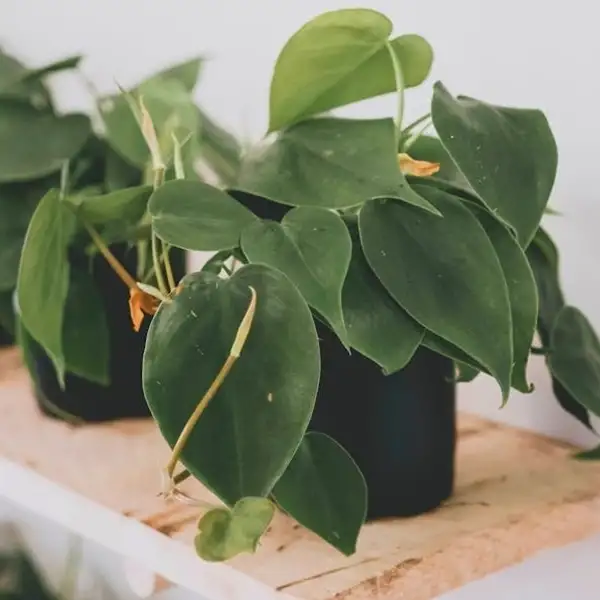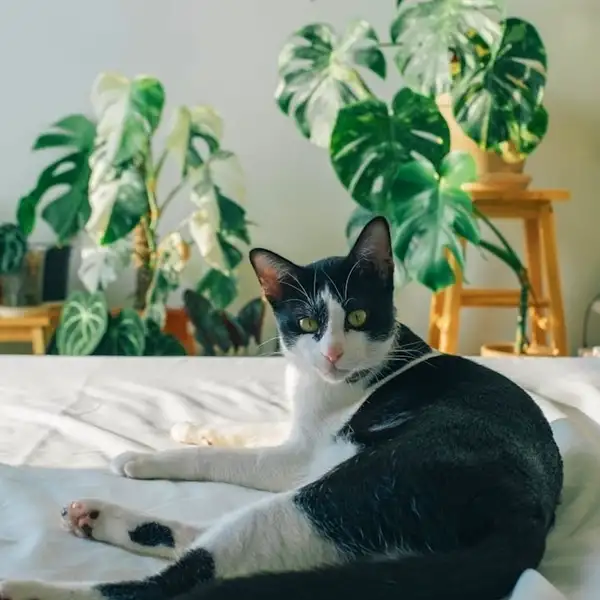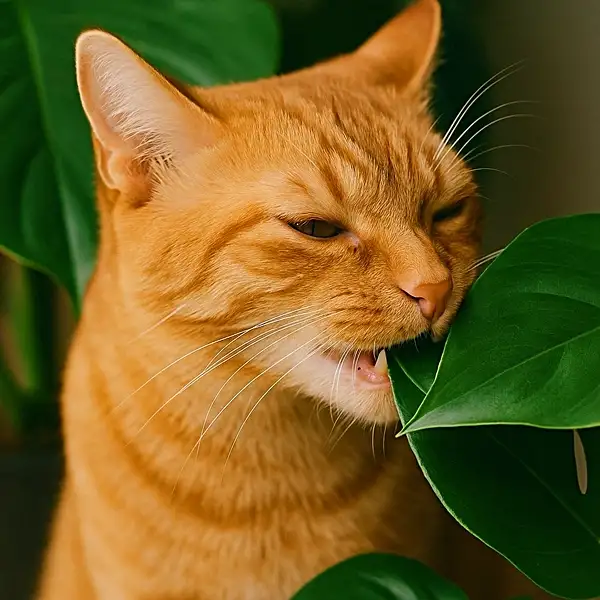Key Takeaways
| 🌿 Key Takeaways |
|---|
| Are Philodendrons toxic to cats? Why one of the most beloved houseplants could be risky for your feline friend 🐾 |
| The hidden plant defense mechanism that might surprise you |
| Early signs of trouble—what to watch for if your cat gets curious |
| Immediate do’s and don’ts if exposure happens |
| Practical ways to enjoy greenery without putting pets at risk |
Philodendrons: A Popular Houseplant
Philodendrons are tropical houseplants known for their lush foliage & easy-to-care-for nature. Originating from rainforests of South America, they have become a popular choice for indoor horticulture enthusiasts across the world.
Genus ‘philodendron‘ includes hundreds of distinctive species & cultivars showcasing a variety of leaf shapes, sizes, colors & growth patterns.

- One appealing characteristic that makes philodendrons so popular among plant lovers is their adaptability to low-light conditions.
- Unlike many other plants that require direct sunlight to grow healthily, philodendrons can typically thrive in shaded environments or indirectly lit rooms. It makes them ideal decor elements inside homes & offices.
- A common misconception about this plant stems from its name ‘Philodendron’, derived from Greek words (“phileo” (meaning “love”) & “dendron” (meaning “tree” or “plant”) ) meaning ‘love-tree’. However, this moniker might be deceiving, as not everything about this beautiful foliage is lovable – in fact, it could potentially pose harm, especially to pets living within the same household, such as cats.
- Moreover, while adding greenery around helps enhance aesthetics at home or office spaces also improves air quality by removing harmful pollutants – an attribute recognized in NASA’s clean air study – for pet parents who adore both felines & flora alike should be aware that the viridescent/green charm of philodendrons comes with certain warnings due to its toxicity on domestic animals.
Toxic Constituents in Philodendrons Explained
The table below will demonstrate how these houseplants though pleasing to eye have an evident dark side too, which pet owners must not overlook.
| 🧪 Toxic Constituents in Philodendrons | |
|---|---|
| Main Toxin |
|
| Function in Nature |
|
| Effects Upon Contact/Ingestion |
|
| Danger Level |
|
| Expert’s Opinion |
|
| American Society for the Prevention of Cruelty to Animals |
|
Note: If you are thinking about any famous variety of philodendron, like:
- Philodendron Birkin
- Heartleaf Philodendron
- Philodendron Brasil
- Philodendron erubescens
- Philodendron Gloriosum
- Philodendron melanochrysum
- Philodendron hederaceum
- Philodendron Pink Princess
- Philodendron xanadu
Keep in mind, all of these contain calcium oxalate crystals & are toxic to pets (cats or dogs).
4 Reactions: What Happens If A Cat Eats Philodendron

Ingesting philodendrons can provoke various adverse reactions in your feline family member.
| 🐾 How Philodendrons Affect Cats | |
|---|---|
| Type of Exposure |
|
| Internal Effects |
|
| Behavioral Signs |
|
| Chewing vs Ingesting |
|
6 Danger Signs of Philodendron Poisoning in Cats
Symptoms of poisoning may become obvious almost immediately after exposure –
| Symptom | What It Means |
|---|---|
| 😿 Excessive drooling |
|
| 🥵 Difficulty swallowing |
|
| 🐾 Frantic grooming |
|
| 🔊 Vocal changes |
|
| 🐟 Loss of appetite |
|
| 🤢 Attempting to vomit |
|
5 Steps: Treatment Options for Cats Ingesting Philodendrons
Swiftly responding to symptoms of philodendron ingestion is crucial –
| 🩺 What to Do if Your Cat Eats Philodendron | |
|---|---|
| Step | Action & Purpose |
| 🚨 Immediate Action |
|
| 🤮 Induce Vomiting (Vet Only) |
|
| 💊 Antihistamines |
|
| 🩹 Pain Relief |
|
| 🧑⚕️ Vet Monitoring |
|
The Best 4 Prevention Strategies: How to Keep Your Cat Safe from Philodendrons
While having these lush green plants around your home has its aesthetic benefits, taking preventive steps is most effective in ensuring safety for your four-legged family members.
If you are a cat parent who loves gardening indoors with Philodendrons then try –
| Strategy | Why It Helps |
|---|---|
| Place philodendrons in pet-free zones |
|
| Educate yourself on toxic plants |
|
| Switch to faux plants in cat zones |
|
| Use pet-safe plant alternatives |
|
Final Thoughts
Protecting kitties from potential dangers posed by popular houseplants like philodendrons is essentially a cat lover’s duty. Acknowledging good practices ensures well-being of their feline friends while also preserving & enhancing natural beauty of their indoor environments.
Frequently Asked Questions
What is most toxic house plant for cats?
Lilies top the list - ingesting even a small amount can lead to severe kidney failure in cats.
Is Philodendron bad for animals?
Yes! It poses a risk to animals especially pets due to its toxic crystals, especially if they chew or ingest any part of plant.
How poisonous is philodendron?
It is moderately toxic. While rarely fatal, the irritation it causes demands immediate attention to ease your cat’s pain & prevent further complications.
What happens if a cat eats philodendron?
The plant's calcium oxalate crystals pierce your cat’s mouth & throat, causing pain, drooling, swelling & signs of distress like pawing at face or frantic grooming.



